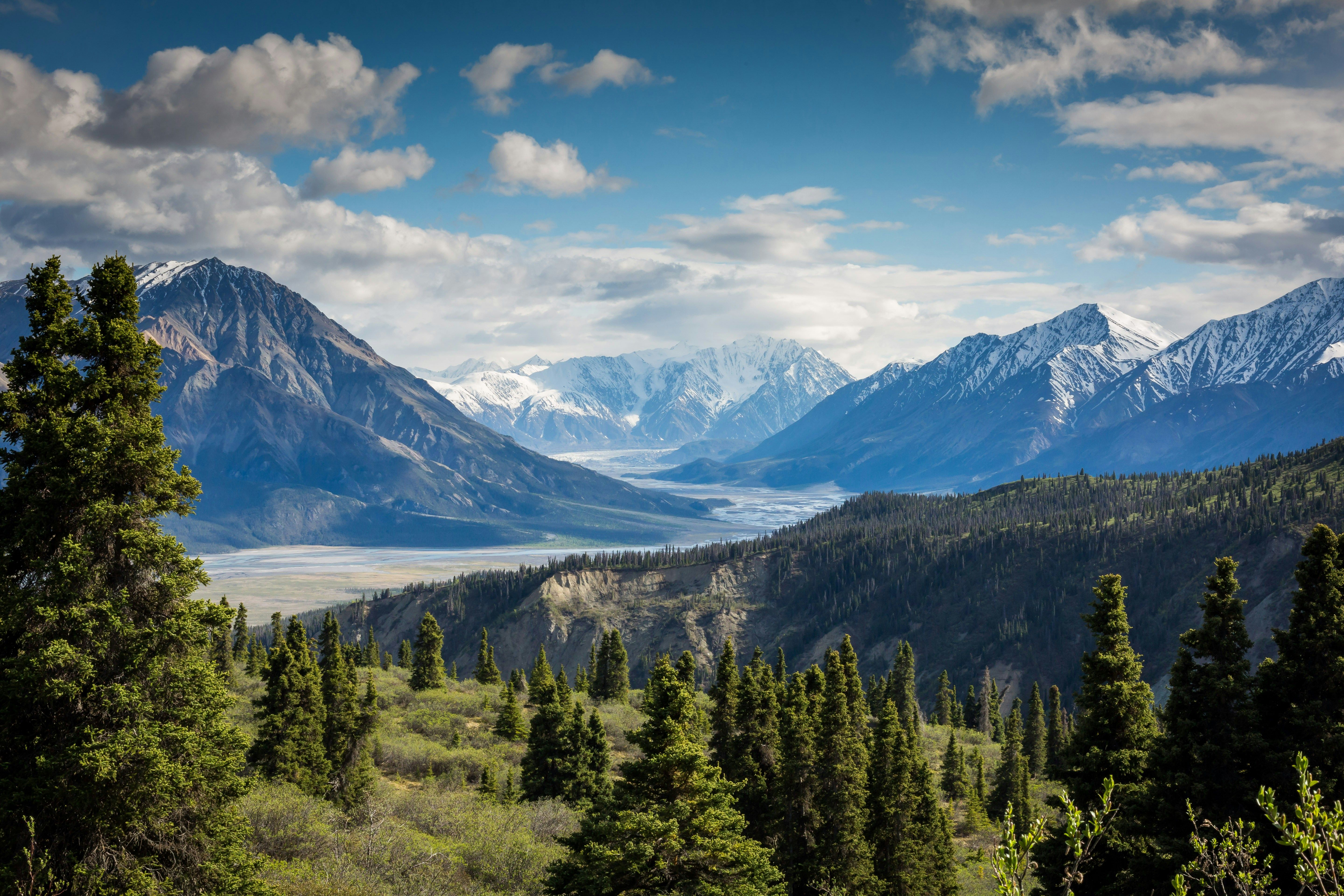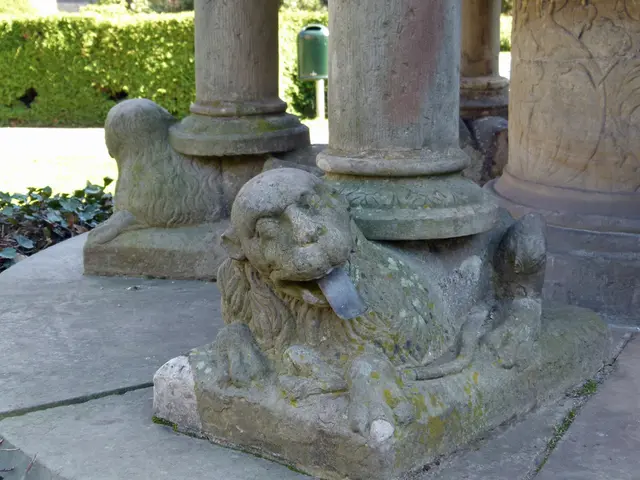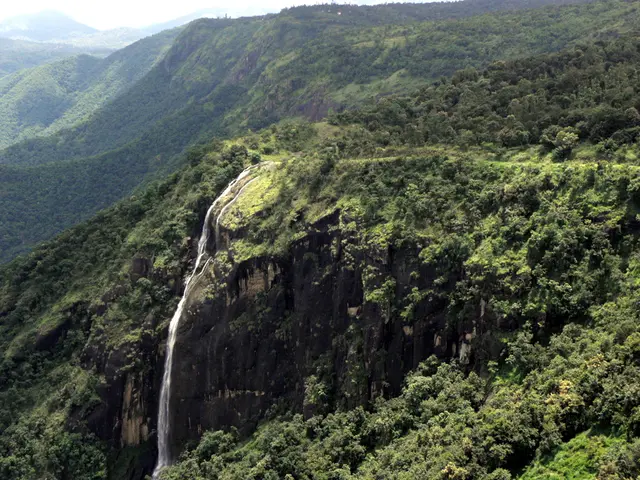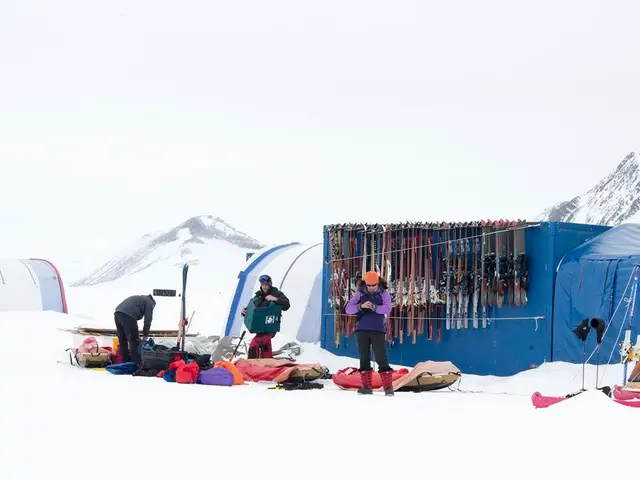Journeying through Northeast Iceland: A Thrilling Exploration
Revamped Guided Tour to Húsavík, Iceland's Whale Haven
Húsavík, the "harbor of houses" nestled on Iceland's remote North coast, boasts a rich history and remarkable marine life, making it a must-visit destination. With charms dating back to the Viking age, this picturesque town is less than an hour away by flight from Reykjavík.
Fabled as the site of Iceland's first house, built by Swedish Viking Garðar Svavarsson in 860, Húsavík is the perfect base for day trips to many of Iceland's famous attractions. Its strategic location is also the starting point for the popular Diamond Circle.
Known as the "town of whales," Húsavík's main attraction lies beneath the waves. The waters here are teeming with various whale species, such as the giant blue whale, fin whale, and humpback whale. These sightings are more common in Húsavík than in the South of Iceland.
Desiring a quick and exciting escape, I chose a budget-friendly package offered by the local airline Eagle Air and the well-known hotel chain, Fosshótel, whose branch in Húsavík presents an affordable option. The flight takes only 50 minutes, making Húsavík an easy weekend retreat from Reykjavík.
Upon arrival, we were greeted by Gunnar Jóhannesson, the managing director of Travel North, who offered insights into Húsavík's history and allure. The airport is perched on a lava field about ten minutes driving distance from the town center. Upon entering the heart of Húsavík, we noticed the bustling harbor filled with whale-watching boats and the town's pride, the quaint, wood-paneled church erected in 1907.
Our accommodation was the stylish and modern Fosshótel Húsavík, the largest conference hotel in all of Northern Iceland. The hotel boasts a bright, airy, elegant ambiance while catering to families' needs. Rooms are equipped with modern conveniences like fridges, safes, and coffee machines.
Feeling like royalty, my seven-year-old daughter enjoyed her double bed and private TV, while our hotel restaurant, the Moby Dick, offered a diverse menu, including fire-oven pizzas, reindeer burgers, and fish and chips. The restaurant, appropriately named after Húsavík's beloved residents, featured a kid-friendly menu and whale-themed coloring book and crayons.
After exploring the town and enjoying a leisurely dinner at the Moby Dick, we retired to our comfortable rooms, eager for the adventures awaiting us the following day.
Saturday morning dawned bright and clear, and after a hearty breakfast at Fosshótel Húsavík, we made our way to the harbor for our whale-watching adventure. As we boarded our traditional oak fishing boat, a charming vessel smaller than the large whale-watching ships in Reykjavík, excitement filled the air.
Dressed in multiple layers and provided with overalls by the company, we sailed out into Skjálfandi Bay. Our guide skillfully maneuvered the boat through the strong waves, and as if on cue, a school of dolphins appeared, leaping from the water in search of prey.
Suddenly, our guide shouted, "Two-o-clock!" We shifted our gaze, and there, breaching the waves, was the imposing reddish-brown back of a fin whale. We followed the majestic creature, spotting two fin whales swimming side by side. Unlike their humpback counterparts, fin whales, the second largest whale species, can grow up to 21 meters in length. Despite their impressive size, they remain vulnerable due to limited hunting by whaling companies based in Reykjavík harbor.
As the whale-watching season had just begun, we were fortunate to spot several pods of humpback whales, their dark backs glistening as they gracefully surfaced and dived. The sight left my daughter in awe, declaring her newfound love for these gentle giants of the sea.
After an unforgettable encounter with the whales, we returned to the harbor and enjoyed a relaxing lunchtime snack before venturing to the Geosea, a unique geothermal sea bath opened last year along Húsavík's coast. The baths, warmed by mineral-rich seawater, offers stunning views of the ocean and nearby mountains.
Stepping into the warm, inviting waters, we marveled at the steam rising and the breathtaking coastal scenery. Relaxing in the pool, we found it hard to resist the allure of the locally brewed Húsavík beer or refreshing fruit juice from the pool bar.
Refreshed and rejuvenated, we walked back to Fosshótel Húsavík, where we dined on modern interpretations of traditional Icelandic fare before retiring for the night.
On Sunday, we reluctantly bid farewell to Húsavík, our hearts filled with amazing memories of this unforgettable whale haven.
Tidbits:- Húsavík Whale Museum, located near the harbor, offers insights into marine science and local history.- Skjálfandi Bay serves as a prime location for spotting various whale species, including humpbacks and blue whales.- Whale-watching tours in Húsavík often feature experienced guides who provide live commentary on whales and other marine life.- Besides whale-watching, other popular activities in Húsavík include puffin watching on nearby islands, touring the coastline, and visiting the Exploration Museum.
- To learn more about the marine life and local history, visit the Húsavík Whale Museum, conveniently located near the bustling harbor filled with whale-watching boats.
- Skjálfandi Bay, the prime location for spotting various whale species such as humpbacks and blue whales, is a must-visit for any traveler seeking adventure.
- For eco-conscious travelers, consider exploring the town's geothermal resources and relaxing at the Geosea, a unique geothermal sea bath that offers stunning coastal views and rejuvenating mineral-rich waters.
- Adopting a sustainable lifestyle, incorporate local food-and-drink options into your travels, such as sampling Húsavík beer or reindeer burgers at the Moby Dick restaurant at Fosshótel Húsavík.
- Embracing the local culture, explore the wood-paneled church erected in 1907, a testament to Húsavík's rich history and charming aesthetic.
- To reduce your carbon footprint, choose electric vehicles for your car-maintenance needs and opt for adventure or cultural travel experiences when planning your itinerary.
- Balancing budget and luxury, consider combining budget-friendly travel options, such as the packages offered by local airlines like Eagle Air and hotel chains like Fosshótel, with high-quality experiences like whale-watching in Húsavík.








